- Home
- Rural Development
- Nature Trails
- Nature Trails
- Central Sector
- Sierra de Alcaraz
Sierra de Alcaraz Greenway Nature Trail. Reolid Section
Description

Pastures and protected crops between the Sierra del Relumbrar and the Sierra de Alcaraz
Last stretch of the La Sierra de Alcaraz Greenway Nature Trail, which begins at the old station of Reolid and merges into the Segura Nature Trail, with both of them following the old Baeza-Utiel railway route. During the trip, the traveller will visit the old stations of Reolid, Villapalacios and Bienservida; the first two having tunnels in their passages through each municipality.
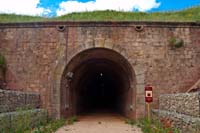
This section of the Sierra de Alcaraz Greenway Nature Trail, which is almost 20 km long, begins at the rest area located in front of the old train station of Reolid. Soon after leaving the main building behind, the traveller reaches kilometre point 87 (as the route starts in Albacete) and the Reolid tunnel, which is 520 m long, equipped with electric, automatic light, although the use of a torchlight is advised.
Reolid (parish of the village of Salobre) is left behind on the left side as the traveller advances along the tunnel, which may go unnoticed since the end of the tunnel is located outside the village. The trail runs parallel to road N-322, leading the traveller to the other side of the three-arched bridge over the river Salobre. A few meters before reaching kilometre point 90, an old train station marks the end of the trail parallel to the aforementioned road.
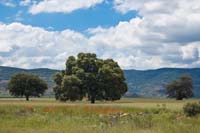
Holm oaks (Quercus ilex) are the main forestry species, alternating scrubland patches with pastures and cereal crops without trees. Right after kilometre point 93, the Sequillo creek is crossed via the corresponding three-arched bridge; the traveller can also enjoy the wonderful views of the Sierra del Relumbrar and the Sierra de Alcaraz on both sides of the trail.
Olive trees (Olea europea) alternate with cereal crops and different species, where holm oaks have a major role. After starting a shared stretch over 500 m long, the traveller will see the village of Villapalacios, preceded by a rest area located in front of the warehouse and the buildings of the old Villapalacios train station.
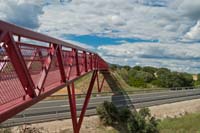
Cereal crops and olive groves become the protagonists of the landscape as the traveller reaches the short tunnel of Villapalacios, with a length of 44 m, leaving the homonym municipality on the left of the trail. This railway infrastructure is followed by another bridge with three arches over the river La Mesta, included in the Natura 2000 Network as Site of Community Importance (SCI) and Special Area of Conservation (SAC) Sierra del Relumbrar y estribaciones de Alcaraz.
The trail goes slightly up and reaches kilometre point 98, going southward and slightly descending until reaching the Peñuelas creek, which the traveller will pass over through the old single-arch railway bridge. Climbing slightly and leaving a farmhouse or cortijo on the right, the old station of Bienservida, similar to the two previous buildings, is reached. After advancing parallel to road N-322, the traveller will cross it via a newly constructed footbridge. A paved pass with an elevated walkway enables travellers to cross when the trail is flooded.
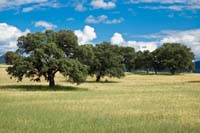
Kilometre point 104 precedes the river Turruchel, which is then crossed via a single-arch railway bridge. The trail is surrounded by beautiful pastures on both sides until reaching kilometre point 105, where they are replaced by a repopulated area of pine trees composed of stone pines (Pinus pinea) and Aleppo pines (Pinus halepensis). A few meters after the pine forest, two arrow-shaped signs pointing in opposite directions mark the end of the Sierra de Alcaraz Greenway Nature Trail and the end of the Segura Nature Trail; this is a symbolic end, since the trail continues under a different name, following the Baeza-Utiel railway route.
Sites of interest
Map
Puntos de Interés
Municipio
Orografía
Profile
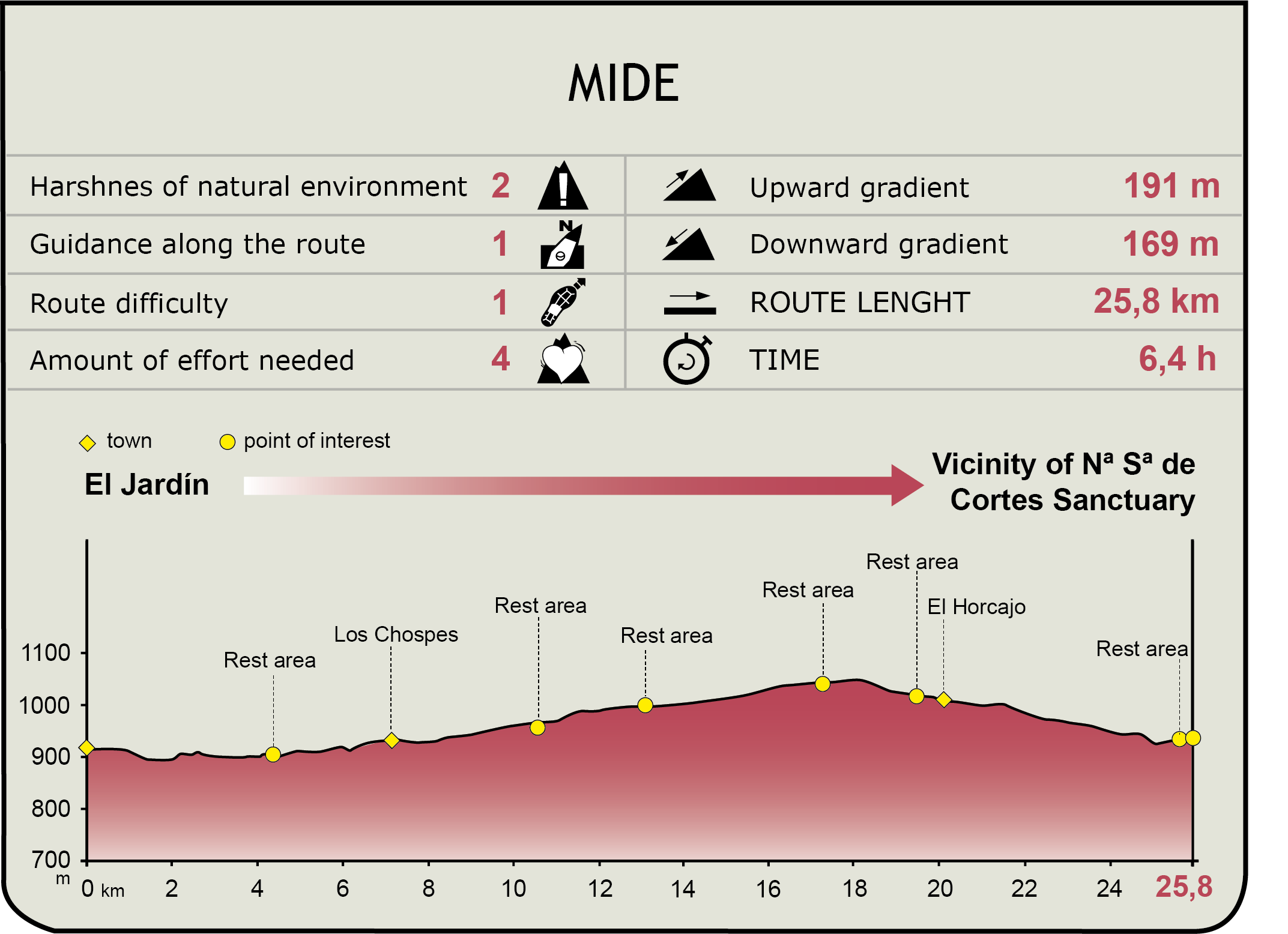
MIDE (Method for the Information of Excursions)
Featured
Further information
Villapalacios
A municipality located in the south-west of the province of Albacete, near the border with Jaén. This village, dedicated to agriculture, has a long history linked to the Counts of Paredes, who turned this municipality into the capital of the Señorío de las Cinco Villas. They were also responsible for some of its architectural heritage, since certain elements of the San Sebastián church were built upon instruction from the aforementioned family. Nowadays it is the most important building in the village, and it was declared a historic-artistic site by virtue of Royal Decree of 17 February 1978. The patron saint festivities, which take place on 14 September, honour the Santísimo Cristo de la Vera Cruz.
Baeza-Utiel railway
For that purpose, a railway was designed from the Baeza station (currently known as Linares-Baeza) to Saint-Girons (the Algeciras-Baeza route used existing lines) via Albacete, Utiel, Alcañiz and Lérida. This line was divided into different stretches: Lérida – Saint-Girons (175 km), Baeza – Utiel (366 km), Utiel – Teruel (100 km) and Teruel – Lérida (273 km). While in some of these stretches (Utiel-Teruel) the works were never undertaken, in certain parts some stretches were indeed opened (Lérida-La Pobla, which is currently operational).
The Baeza-Utiel stretch was 366 km long, and was divided into four stretches. In January 1932, when the Plan Guadalhorce was repealed, 60% of the three first stretches, comprising of a total of 246 km which connected Baeza with Albacete, was completed, while the works between Albacete and Utiel were more delayed (30%).
After the Civil War, only the works of the first three stretches were resumed; however, when the track was already laid (including the ballast, sleepers and rails) along the 116 km of the third stretch (province of Albacete) and the installation of the track in the first two stretches (province of Jaén) was about to be put out to tender, a report by the Banco Internacional de Reconstrucción y Desarrollo (belonging to the World Bank) in 1962 caused the Ministry of Public Works to temporarily paralyse the construction of this line in January 1963; only the new station of Albacete, replaced in 2010 by the current Albacete-Los Llanos station, was opened.
The abandonment of the works became definitive in 1985, and the track installed in the stretch of the province of Albacete was removed in 1991.